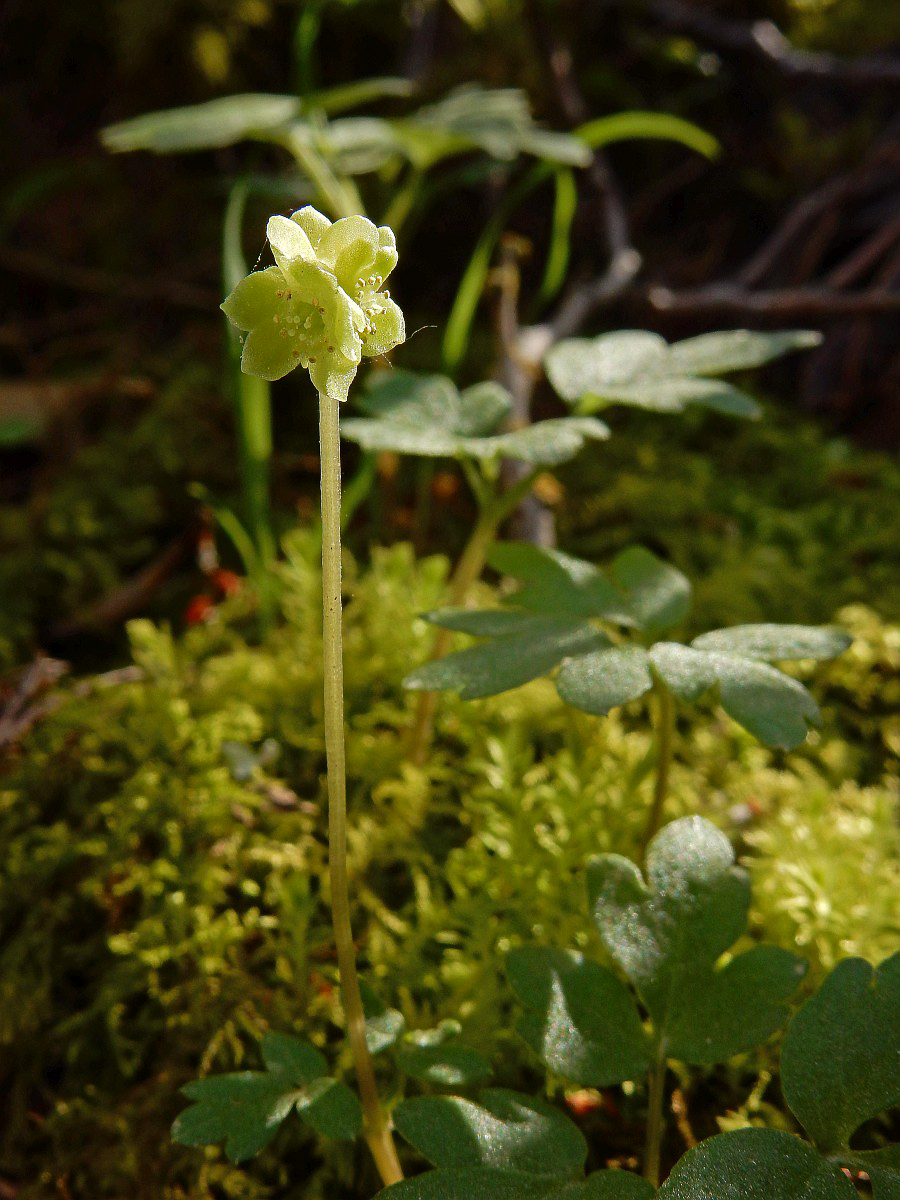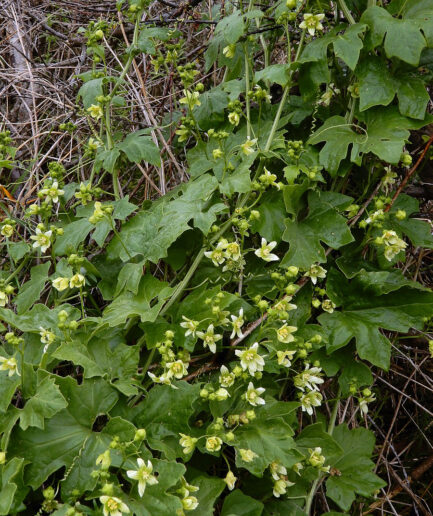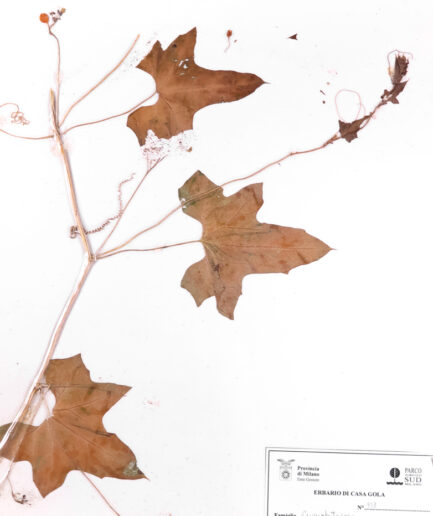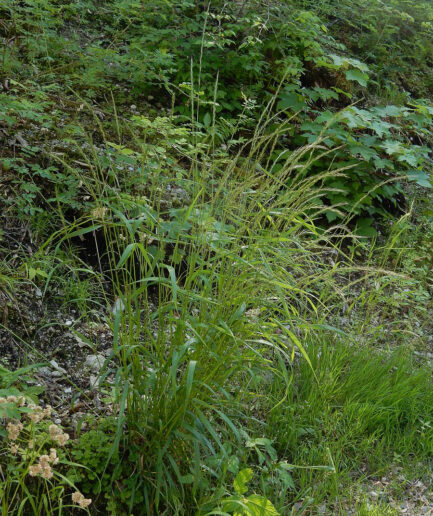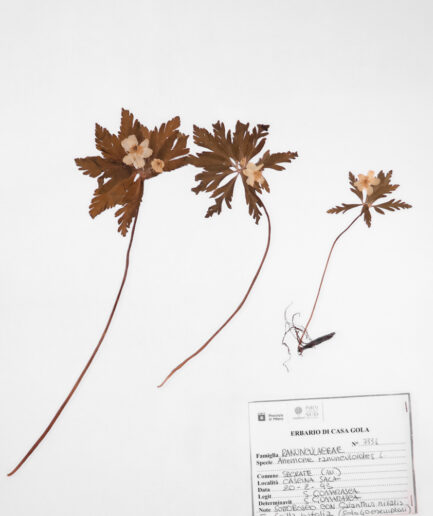Moschatel
Scientific Name: Adoxa moschatellina L.
Family: Viburnaceae
MORPHOLOGY
Growth habit and size: Small, delicate perennial herbaceous plant, 5-10 cm tall, glabrous and shiny, with a long, horizontal, filiform, whitish, and scaly rhizome that bears fusiform tubercles generating new plant.
Stem: Simple, erect, angular stem.
Leaves: Each stem bears only one pair of opposite leaves, without stipules, shortly petiolate and tripartite. The basal leaves feature a long, grooved petiole (5-8 cm) and a triangular outline blade (3-5 x 3-5 cm), biternate with rounded, mucronate lobes.
Flowers: Hermaphrodite, actinomorphic flowers, in a pauciflorous ± cubic apical flower head (6 mm diameter), greenish and small, 4(5)-4,5(7) mm in diameter, slightly moss-scented. The petals and the sepals are fused at the base, the lateral flowers are pentamerous with 5 petals and 3 sepals, and the flower at the top of the head is tetramerous with 4 petals and 2 sepals.
Fruits and seeds: The fruit is a greenish globose drupe provided with a protruding crown all around and containing 1-3 seeds. It blooms from February to May.
DISTRIBUTION AND HABITAT
Widespread throughout Italy except in the major islands and in Puglia. Found in deciduous forests (especially beech forests) and mixed forests between 100 and 1,700 m.
USES
The leaves produce an essence with a pleasant moss-like scent (musk) through steam distillation, which is used in drops as a sedative and antispasmodic. Before taking any plant-based product (medicinal or non-medicinal) for therapeutic or similar purposes, it is always advisable to consult a doctor.
INTERESTING FACTS
It secretes nectar from a ring at the base of the stamens, attracting many insects, but rarely produces seeds. It mostly propagates asexually through tubercles.
Photo: Licensed freely by Saxifraga and JHans Dekker, Peter Meininger, Ed Stikvoort, Rutger Barendse.





